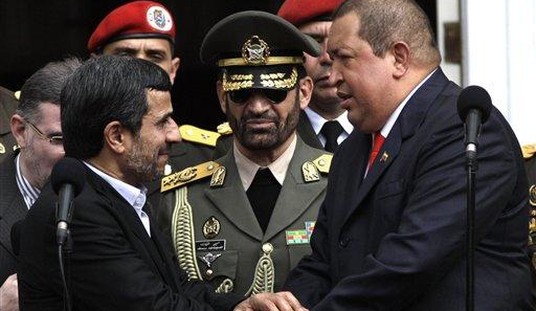If George Washington had not been sitting in the room, it’s likely many of the delegates to the federal convention of 1787 would have supported a multi-executive model for the new Constitution, rather than a solitary president. After all, just upstairs in the Pennsylvania State House where they met that summer was the chamber where the Pennsylvania executive council met, led by a president who they changed annually. But Washington’s unquestioned integrity, submission to civilian rule over the military, and willingness to lay down his sword after the war gave the delegates a picture of an energetic executive, yet one who could be trusted to guard the liberties of the people. No one doubted that he would be the first to take the oath of the new office, and so the presidency was made in Washington’s image.
Unfortunately, after 1799, characters like Washington were in short supply. If Barack Obama had been sitting in Washington’s chair, the American story would have been — in Obamanese — “fundamentally transformed.” When Republicans and other Americans react with almost knee-jerk resistance to Obama’s executive overreach, it’s not personal … it’s historical.
I’ve spent the past year and a half studying the U.S. Constitution, the Federalist and Anti-Federalist papers, as well as a dozen or more books and many primary source documents from the period of the Founding through the ratification of the Constitution, so that I could write the new PJTV video series Freedom’s Charter. This quest has made me read the daily news in a new light.
We revolt, at least inwardly…
- When he makes recess appointments (to the National Labor Relations Board and to the new Consumer Financial Protection Bureau) while the Senate is not in recess;
- When he does through bureaucratic regulation what he cannot accomplish legally through persuasion of the people’s legislature;
- When he stands before the Congress, the nation, and the Supreme Court, as he did during a State of the Union address, and publicly rebukes the Court for a decision he didn’t like;
- When he initiates overseas military adventures (i.e., Libya) without congressional approval;
- When he campaigns around the country saying “we can’t wait” for Congress to act, and instructs his cabinet to do everything they can without Congress, because he wants to spend more borrowed money on more social experiments, despite the demonstrated failure of his previous experiments.
- When he erects “a Multitude of new Offices, and [sends] hither Swarms of Officers to harass our People, and eat out their Substance.”
(That last one actually referred to King George III … at least, originally.)
In 1787, folks clustered in little towns up and down the eastern seaboard looked to their local papers in vain for word of what was happening with the delegates in the Assembly Room in Philadelphia. The only “press release” to emerge during the four months of deliberations that produced our Constitution attempted to quell a pernicious rumor: “Tho we cannot, affirmatively, tell you what we are doing; we can, negatively, tell you what we are not doing–we never once thought of a king.”
Well, that’s technically accurate. However, on June 18, 1787, New York’s Alexander Hamilton delivered a five-hour speech to the formally dressed delegates shut up indoors during a sweltering Philadelphia summer. Among other ideas, Hamilton proposed an elected executive (who he called “the Governor of the United States”) who would serve “during good behavior,” like Supreme Court justices do — effectively for life. In other words, Hamilton called for an elected monarch. His proposal was met with stony silence and a motion to adjourn.
Americans didn’t want a king. They feared an excessively strong executive.
As a Delaware Whig wrote in the Pennsylvania Journal, November 13, 1776: “The executive power, is ever restless, ambitious, and ever grasping at encrease of power.”
Virginia Governor Edmund Randolph, who presented the so-called Virginia Plan (really James Madison’s plan), which provided a framework for debate at the start of the convention, thought the idea of a single executive contained the “foetus of monarchy.”
North Carolina’s Hugh Williamson felt that eventually we’d have a king, but wishing to postpone the inevitable, he proposed limiting the president to a single term of, perhaps, up to 12 years.
Pennsylvania’s Gouverneur Morris, who penned the preamble, favored a powerful president, but told the delegates, “This magistrate is not the King, but the prime-Minister. The people are the King.”
Even so, New York Gov. George Clinton, writing as CATO in the New York Journal (Nov. 8, 1787), warned that the presidential term should be no more than one year, to prevent the executive from surrounding himself with appointees, and growing a government bureaucracy dependent upon him that would work to assure his continuance in office, creating aristocracy or monarchy.
The constitutional presidency holds a few specific powers — he’s commander in chief of the military, he can make treaties and appoint various officials and judges with the advice and consent of the Senate, he can make short-term appointments when the Senate is in recess (a provision designed for an age of travel by horseback, and long Senate recesses), he recommends legislation to the Congress and he can veto bills. But beyond that, his main job is to ensure that the law is carried out, not to create law. When not at war, the presidency is a modest job, at least according to the Constitution.
Few presidents of the modern era have viewed it that way. But many Americans still yearn for one of whom it can be written (as William Allen White wrote of President Benjamin Harrison):
“He was content to exercise the simple constitutional functions of his office. He was a constitutional President, and, with all his gelidity, this man whose feet were always under his desk, whose breath was out of other people’s faces, and whose arms were off their shoulders, was never accused of assuming to be a dictator.” (“Masks in a Pageant,” 1928, p. 89)
—–
Scott Ott is creator of Freedom’s Charter, a 20-part series of brief videos on PJTV.com, which reveals the conflicts, compromises, and characters behind the writing of the U.S. Constitution.









Join the conversation as a VIP Member